
7 Steps to the Ultimate Social Media Content Strategy
Feeling like you’re just posting on social media for the sake of it? Or maybe you’re so swamped with other tasks that you barely post at all.
Either way, you’re not alone. Many businesses struggle with social media because they lack a documented content strategy. But don’t worry—HOT IRON Digital, Irelands’s leading digital marketing agency, is here to help.
Why You Need a Social Media Content Strategy
Being active on social media is important for brand awareness. Having a content strategy can bring additional benefits.
It’ll save you time
It might seem like creating a strategy is time-consuming, but in reality, it saves you time in the long run. With a plan in place, you won’t waste time figuring out what to post at the last minute.
It supports your business goals
Your content should support your overall marketing strategy. By understanding your target audience, you can turn social media into a revenue-generating tool.
It’ll help you measure results
A content strategy helps you define and track the metrics that matter. You’ll know what works and what doesn’t, allowing you to adjust your approach for better results.
With a social media content strategy, you’ll define your most important metrics—those that indicate whether your strategy is paying off. It also gives eCommerce marketers a way to prove which formats and topics are most successful (so they can create more of it).
1. Set goals for your new strategy
Before you start posting, set specific goals aligned with your business objectives. Common goals include building brand awareness, growing your audience, boosting engagement, driving website traffic, and increasing leads and sales.
Like any marketing campaign, digital or otherwise, social media metrics should be in line with your business objectives. It’s the best way to create a strategy that actually drives revenue.
So, what do those social media KPIs look like? Here are a few examples:
Build brand awareness.
Whether you’re establishing a brand voice or raising awareness about the causes you support, social media is a great vehicle to do so.
Grow your audience.
Social media success is often determined by the size of your audience and the rate of growth. In general, the more people in your audience, the more opportunities you have to generate leads.
Boost community engagement.
While your audience size can be an important metric for influencers, what matters even more is the percentage of people viewing your social media content and liking, commenting on, or sharing it.
Drive leads and sales.
If your social media strategy is to succeed, you’ll need to be able to see growth in leads and sales as a direct result of your plan.
Make sure your goals are SMART (Specific, Measurable, Achievable, Relevant, Time-bound).
2. Research your target audience
A strategy to help you meet your new social media goals requires a solid understanding of who you’re trying to reach. If you don’t know who you’re talking to, your target customers won’t either—and no one will listen.
You might already have a few ideas of your target audience, but the best buyer personas aren’t formed on guesswork. They’re formed around real, accurate data from your website and eCommerce platform.
Chances are, you already have Google Analytics installed on your website. Treat it as your best friend. With its Demographics Overview report, you can narrow down your demographics by location, age, gender, interests, and language.
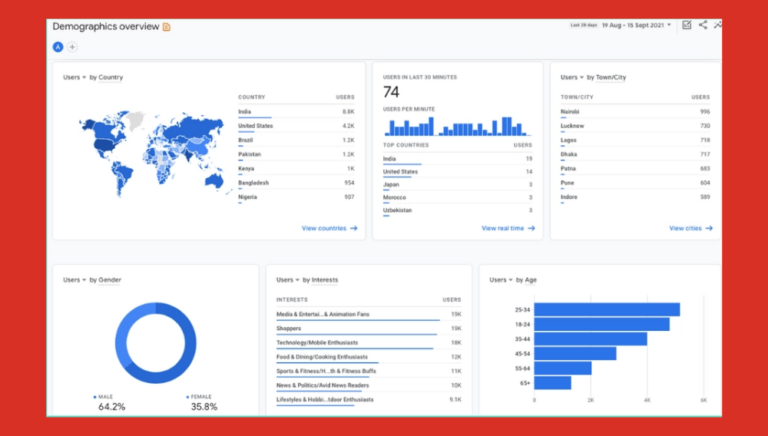
Certain social media tools—including Facebook Page Insights and Instagram Insights—also provide brands with a deep dive into their existing audience. You’re able to see information about your followers, such as:
The time of the day they're most active
The content formats with the highest engagement rate
Where people find your social media content
However, if your business is new and you don’t have existing data to use, you can try some traditional methods of audience research: surveys and reviews.
In your purchase confirmation emails, ask which platform customers found you through. Figure out which influencers they follow. The types of content that makes them most likely to investigate a product further. The content that’s made them consider a competitor.
For rich contextual information, consider offering free trials or product testing in return for feedback. It helps smaller or new eCommerce brands build a better picture of the person they’re creating social media content for.
3. Choose your target platforms
A clearer understanding of who you’re targeting makes it 10x easier to prioritise the platforms your business should be actively posting on.
For example, if you know that your buyer is a B2B professional, you’ll most likely want to use LinkedIn. A quarter of its monthly active users are senior-level influencers.
If your target audience is Gen Z, however, your choice of platform changes. Younger audiences are more likely to spend time watching online video content, making video-heavy platforms like Snapchat or TikTok a bigger priority than LinkedIn.
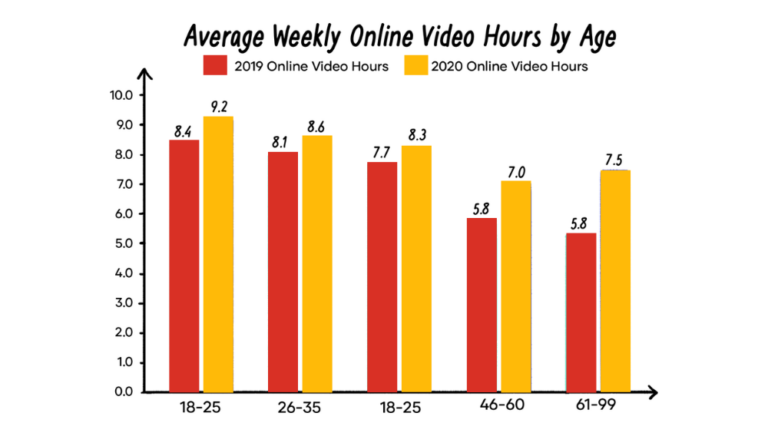
The key point here is: Unless you’ve got a huge social media management and marketing team, you shouldn’t spread yourself too thin by being on all of them. Pick two or three at most, and nail the places your target customer is most active first.
4. Set up metrics tracking
Regardless of which platform you’re using, the only way to judge whether your content strategy is working is to rely on a social media management tool like Buffer, HootSuite, or Later.
Of course, depending on your business and the types of content you create, some metrics may be more important than others. But as a general rule, you’ll want to track the following metrics to start with:
Reach
This metric measures how many users have seen your social media post. The higher your reach, the more “viral” your content is.
Clicks
If you’re linking out to a landing page or blog post on your website, see how many people click on the link. This is what’s called your “click-through rate”: the percentage of people who see a link and click it.
Engagement
Track the social engagement levels on your post to see how effective it is at making your target audience do something. Social media algorithms like to prioritise content that sparks conversations. The higher your engagement rate, the more involved your audience is.
Hashtag performance
If you’re using hashtags as part of your content strategy, judge whether the terms you’re using are driving more eyeballs to your social media post. By monitoring your hashtag performance, you can see which ones work best for your brand—so you can double-down on them.
Sentiment
Tracking sentiment is also super important. To keep on top of your brand reputation, you need to know whether people mention you positively or negatively across social media.
You can track most of these metrics manually by using spreadsheets, but specially built tools like Hashtagify or Falcon.io can take out the guesswork.
Similarly, use your website analytics data to see which social media platforms are driving the most referral traffic. Build a custom segment inside Google Analytics to see which actions visitors from each network took after arriving on your site:
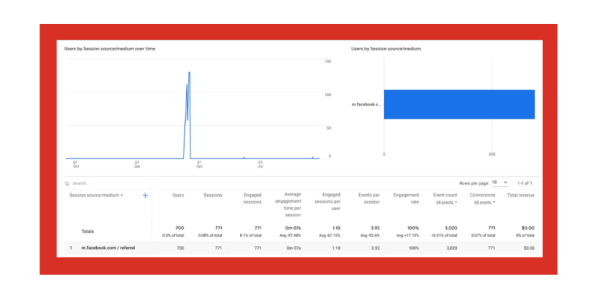
5. Create engaging content
Create high-quality content that falls into four categories: educational, entertaining, inspirational, and promotional. Repurpose existing content and ensure it aligns with your audience’s interests and platform-specific best practices.
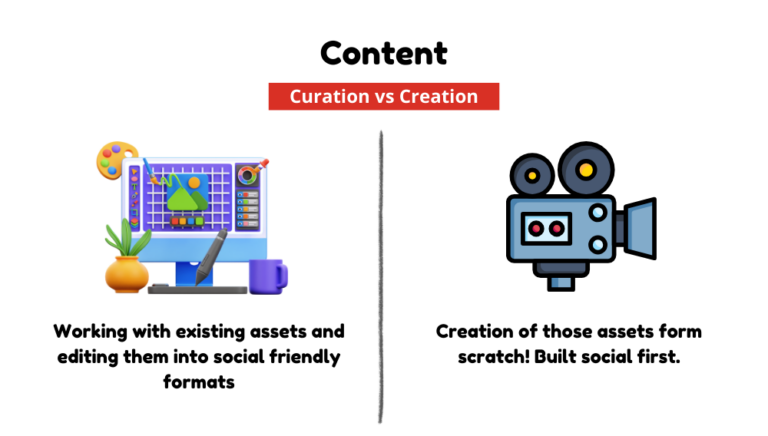
Each type of social media content fits within one of four categories—each of which has different goals and purposes. The four content types are designed to move users through the sales funnel and towards the end goal: A purchase.
This is the content strategy we use at The Social Shepherd for all our clients, to ensure they’re consistently delivering valuable content that resonates with their audience.
To know more in depth about our Social Media Management services you can check it out here or book a free strategy call with our team.
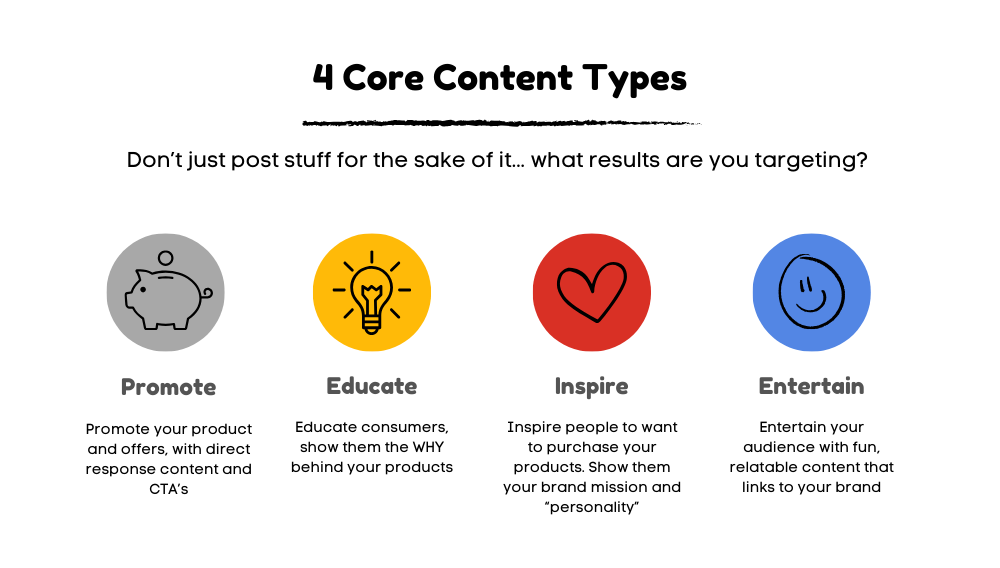
Educational
Help your audience learn about your products, industry, or related topics. For example, a skincare brand might share tips on how to use their products effectively.
Inspirational
Share content that inspires your audience, such as success stories, creative ideas, or motivational quotes.
Content on different platforms
Earlier in your social media content strategy, you determined which platforms you’ll be prioritising. We’ll need to use that information here.
Different types of content work better on different platforms. The tactics that convince TikTokers to stop their scroll won’t necessarily work on Instagram or Pinterest. Similarly, the types of content that nudge Facebook users to visit your site won’t work as effectively on LinkedIn.
So, what do social media users want to see on their favourite networks? Let’s take a look:
Instagram:
Video reigns supreme on Instagram with 500 million people browsing Instagram Stories every day. Shoppable product posts—those with a tagged product from a brand’s Instagram account—are also popular. Some 130 million people tap these posts every month.
Facebook:
Research found that the top 500 Facebook posts were videos. Users prefer to watch video when they sign into the app—and usually avoid text posts containing links.
Twitter:
A fast-moving platform where tweets can get buried easily. To stand out, consider using images and GIFs. Twitter reports that tweets containing GIFs get 55% more engagement than those without.
LinkedIn posts containing one multimedia embed (like a single image or video) tend to get the most views.
6. Plan content on an editorial calendar
By this point, you likely have tons of social media content ideas flying around your brain. We need to create a plan for delivering that content to your target audience.
There are two phases for this stage of the content strategy process: Planning and delivery.
Planning
One of the easiest ways to plan your new strategy is to create a social media content calendar. Being able to visualise how your content will play out in future weeks (or even months) helps you plan what your profile will look like in a few weeks’ time.
Using a calendar also helps you to prepare well in advance for national holidays, which always provide helpful themes to create content around.
Spend some time creating educational, entertaining, inspirational, and promotional content. Create percentage splits for each platform based on the type of person you’re reaching and the content best suited to the platform.
For an eCommerce brand targeting a younger demographic, the posting strategy could look something like this:
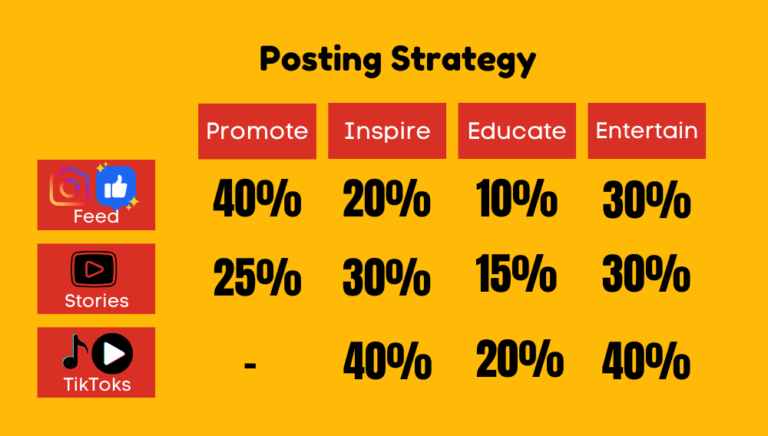
Remember that while you can have a plan, the key for creating a content calendar is to allow room for flexibility.
You might need to make emergency public announcements, handle a PR crisis, or react to the world around you. Be prepared to turn off your campaigns and reshuffle your posting strategy if needs be.
Delivery
Once you’ve got your posting strategy cemented, it’s not unusual to feel overwhelmed at the sheer volume of new content you have to post. The good news is that tools exist to make this easier and more efficient.
Social media scheduling tools like Hootsuite or Buffer, for example, help marketers plan upcoming content in advance. Simply pop your content into its online dashboard and choose the time it should go out. When the time comes, the tool will automatically publish the content on your behalf. No “share Instagram post!” reminders are necessary.
7. Measure and improve
What good is your new social media content strategy if you’re unsure on whether it’s working?
The final step in the process is to revisit the goals you set. Whether that was to drive sales or increase your follower count by 20%, grab data from your social media analytics tool and compare it against your pre-strategy data.
Let’s put that into practice and say you’re evaluating whether your new Instagram content strategy is working. You’ve been posting more educational content to your profile. Before, you treated any new post as an opportunity to make a hard sell.
Using data from your Instagram Insights, you discover that educational content has proved to be more popular than promotional. The new content you’re posting has influenced 1,000 more people to follow your account. Your post engagement rate is also up across the Stories, posts, and Reels you’re posting.
In a nutshell: Your strategy worked, and you should continue to post educational content going forwards.
Ready to take your social media content strategy to the next level?
Creating a social media content strategy can be challenging, but with this guide, you’re well on your way. And if you need a hand, HOT IRON Digital is here to help.
We’ve helped numerous clients boost their social media engagement and achieve their business goals. Ready to see the same results? Get in touch with us today!
